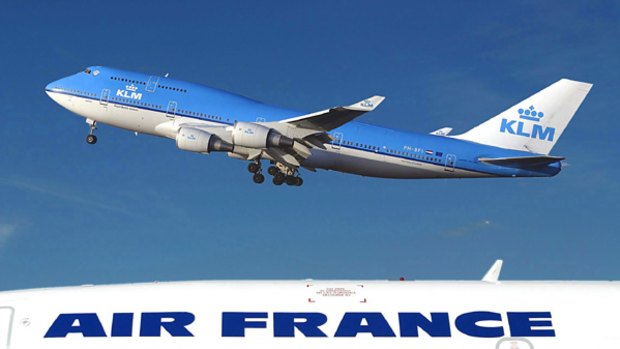This was published 14 years ago
Frequent flyer programs: friends in high places

The lesser known of the three alliances for Australian travellers is the 11-member SkyTeam, which includes Air France, KLM and Delta.Credit: AFP
It's almost impossible to fly these days without coming across brands such as oneworld and Star Alliance. But what do they really mean? Are they marketing hype or something more tangible? And do they only apply to the corporate travellers stretching out in business class or are there benefits for cattle-class passengers? Airline alliances have become big business in recent years so travellers will benefit from having a basic understanding of how they work and what they offer.
The Star Alliance (staralliance.com) is by far the biggest of the three major alliances with 26 member airlines, including United Airlines, Thai and Singapore Airlines.
The oneworld (oneworld.com) alliance has plenty of quality carriers, including Qantas, British Airways and Cathay Pacific, among its 11 members.
The lesser known of the three alliances for Australian travellers is the 11-member SkyTeam (skyteam.com), which includes Air France, KLM and Delta.
The US carrier, Continental Airlines, recently became the first airline to switch alliances, moving from SkyTeam to the Star Alliance. Changing alliances is no simple matter, with everything from frequent-flyer programs to airport locations having to be changed - a process taking 18 months in Continental's case.
The growing power of alliances was highlighted by Continental's declaration that it expects the switch to result in an extra $US100 million ($111 million) in revenue a year. For travellers, alliance benefits are very much skewed to frequent business travellers but even occasional, recreational travellers can benefit.
The most obvious benefit is the ability to earn and redeem frequent-flyer points across a range of airlines. This means that if you fly with Qantas to Los Angeles, for example, and then with American Airlines to another point in the US, you can earn points for the whole journey without having to join more than one frequent-flyer program (see below).
Make sure you join the relevant frequent flyer program before you fly, as some do not allow retrospective claims, even if you have boarding passes and other documentation.
Another benefit for all travellers is the networks and connections created by alliances, making it easier to put together multi-flight itineraries without inconvenient stopovers. In recent years, alliances have taken steps to ensure all member airlines' desks are located in the same area of airports, so passengers catching connecting flights don't have to trek from one end of the terminal to the other.
The Star Alliance claims waiting times have been cut in half in many airports as a result of its "move under one roof" initiative.
For Australians taking big overseas trips, another key benefit of alliances is the ready availability of round-the-world (RTW) fares, which are usually much cheaper than booking separate flights.
RTW fares are incredible value; the number of destinations you can reach on a single fare is growing.
I booked a RTW flight several years ago, before LAN Airlines joined the oneworld alliance, and had to book a separate flight across South America because the oneworld airlines did not cover that sector.
The single flight from Brazil to Peru cost almost as much as the RTW fare taking in several continents. Today, the same journey could be booked with a single fare.
Both oneworld and Star Alliance now offer extensive coverage of the globe, making RTW fares popular with backpackers and other multi-continent travellers.
Which is the best program to join?
It doesn't matter which airline's frequent-flyer program you belong to, as points can be earned and redeemed with any airline in that alliance. However, it is important to note that frequent-flyer points always belong to the individual airline rather than the alliance and if an airline collapses or leaves the alliance for any reason — as was the case with Ansett in 2001 — points and other benefits can be lost.
Some airlines, such as Qantas, charge a one-off joining fee for their frequent-flyer program, while many are free to join. The benefits and potential uses of points vary from program to program, so it's worth having a look around before you sign up. There is also the Virgin Blue Velocity Rewards program, which sits outside the three key alliances and includes the major international airlines Emirates and Malaysia Airlines.
If you are a very frequent flyer, you may attain "tier status" with an alliance: ruby, sapphire or emerald with oneworld, or silver or gold with Star Alliance. Your frequent-flyer membership remains with the individual program you joined, however the tier status provides additional benefits such as lounge access, preferential seating or priority standby across all carriers in the alliance.
Sign up for the Traveller newsletter
The latest travel news, tips and inspiration delivered to your inbox. Sign up now.